
In Recognition of Balclutha
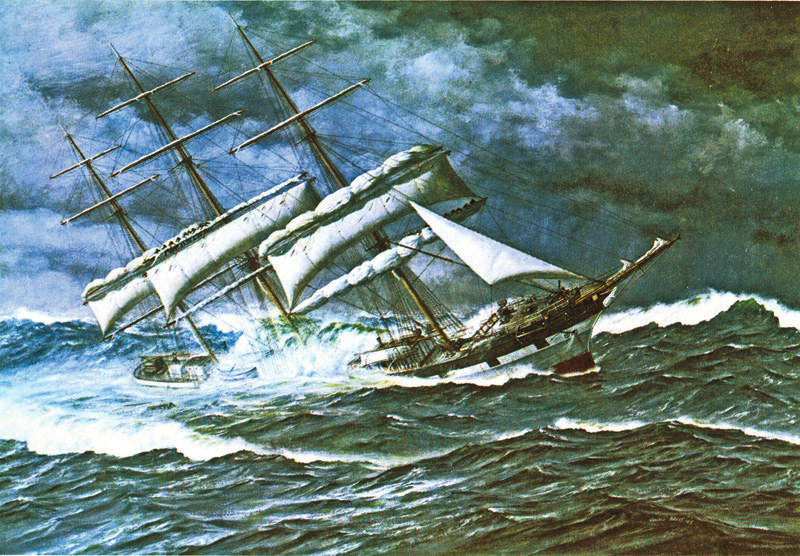
©2016Latitude 38 Media, LLC
If you’re like us, your use of good old-fashioned postage stamps has probably diminished radically in recent years. But here’s one reason to bypass your automated postage machine — or electronically-generated, prepaid labels — and embrace the old-school method. The US Postal Service has announced the issuance of a brand new ‘forever’ stamp depicting the pride of the San Francisco waterfront, the 256-ft LOD square rigger Balclutha, which was built in 1886. (The ship’s image is one of 16 National Parks stamps sold as a panel, issued to celebrate the 100th anniversary of the National Park Service.)
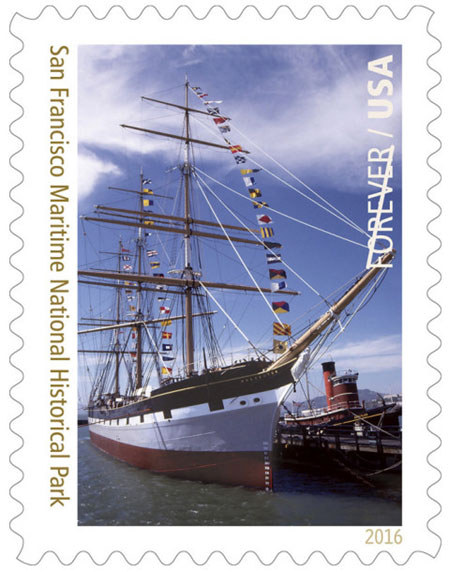
©Latitude 38 Media, LLC
If you haven’t had the pleasure of checking out this splendid relic from the Age of Sail, do yourself a favor and walk her decks sometime soon. Berthed at Hyde Street Pier within the San Francisco Maritime National Historic Park, she is one of the Bay Area’s most impressive remaining links to our sailing heritage.
Learn all about her here.
Comanche Devours Newport-Bermuda
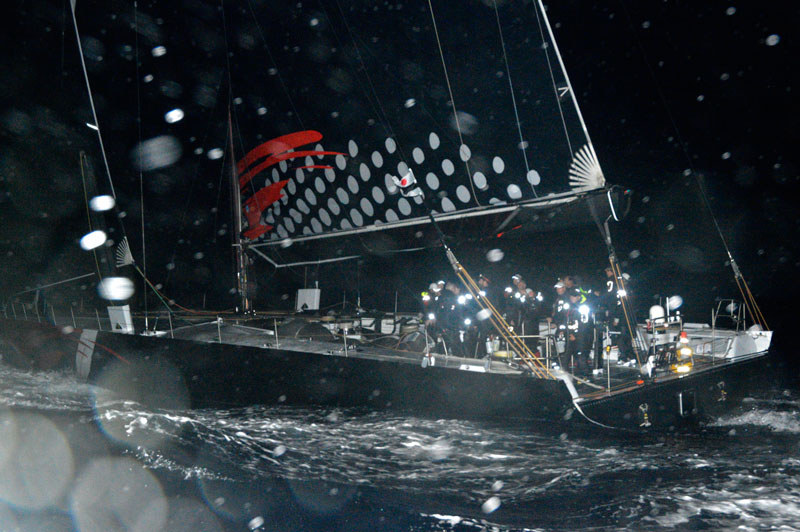
At the Royal Bermuda YC docks last Sunday, the champagne flowed as freely as dark n’ stormies aboard Jim Clark’s Comanche. But it’s a safe guess that none of the crew were toasting Father’s Day. That could wait. The miles of smiles were all for the new course record set by the 100-ft maxi skiff in the 50th running of the Newport Bermuda Race.
The latest edition of the ‘thrash to the Onion Patch’ started on Friday. Comanche, skippered by Ken Read and with the Bay Area’s Stan Honey at the nav table, crossed the finish line off the St. David’s Lighthouse on Sunday at 4:22:53 EDT. Her provisional elapsed time for the 635-mile course is 34 hours, 42 minutes, 53 seconds. This beats the old record, set in 2012 by George David’s Rambler, by a bit more than four and a half hours.
“This boat is as good as it looks,” said Read. “We were averaging 28-29 knots and our highest speed was 32.” But he’s quick to credit Honey for the literal breakthrough that made the record run possible. A day or so before the start, a high had formed south of Newport that threatened to stall out the fleet. Stan found a chink in that high-pressure armor — two little highs that had separated from the big one — and Comanche managed to squeak through one of the resulting holes before it closed, effectively walling off the rest of the fleet. From there on, says Read, “The boat did its job.”
Owner Clark was not on board, but was the first to congratulate the crew by phone soon after the finish.
Designed by the French design firm of Guillaume Verdier, Comanche looks a lot like one of their IMOCA 60s that’s been pumping iron and eating lots of red meat. Nicknamed “the aircraft carrier” for her 25-ft wide transom, the boat’s skimming dish design, along with her canting keel and water ballasting, ignored every racing rule in existence for Clark’s one and only ‘rule’ – that she break records.
Stand by for more of that. As you read this, the boat is on her way back to Newport to prepare for a transatlantic monohull attempt later this summer, maybe a Sydney Hobart, and then to the West Coast for the 2017 Transpac.
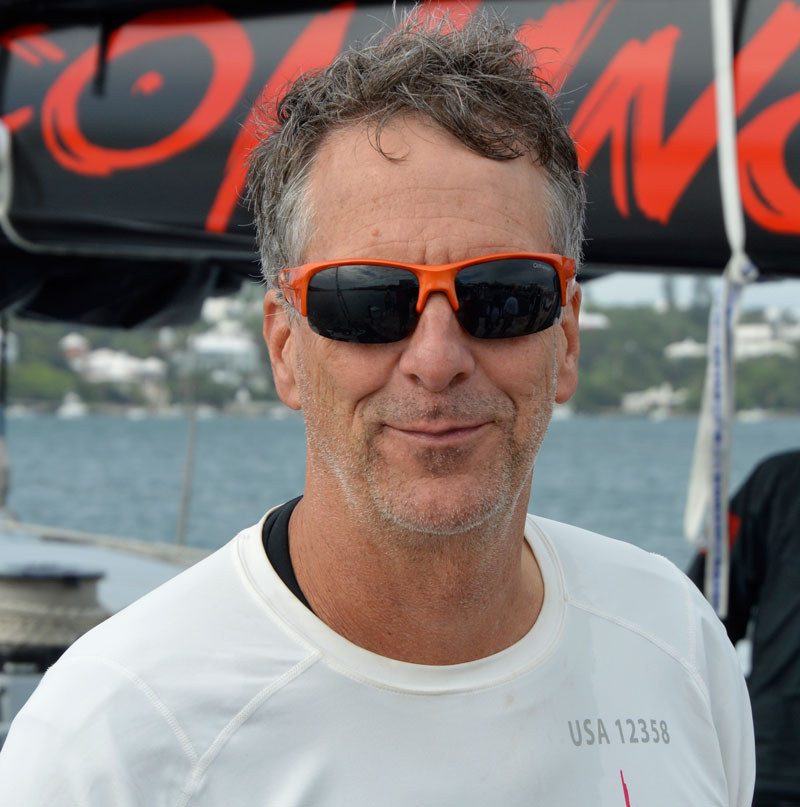
It was really a banner week for Stan Honey in particular, who was named 2016 winner of the Magnus Olsson award the day before the start. (Named for the charismatic Swede, the award is given annually to an individual or organization that upholds Magnus’ indomitable spirit and enthusiasm.)
The rest of the Newport Bermuda Race fleet was led to the finish line by a boat of relatively modest size (a Tripp 41), crewed by three adults and seven teenagers. High Noon finished a few minutes after 9 a.m. on Tuesday and when she reached the Royal Bermuda Yacht Club marina, she was the only Bermuda Race boat in the harbor, and she stood first on corrected time in her division and second overall on elapsed time. The US Merchant Marine Academy Sailing Foundation had loaned the boat to the Young American Junior Big Boat Sailing Team, based out of American YC in Rye, NY. For more info and results in progress, see www.bermudarace.com.
Four-Bridge Fiasco
Sailors, how is your backstroke? Only one of 11 skippers didn’t spend some time swimming on June 18 during the 2016 Sir Francis Chichester Race, the Laser fleet’s periodic circumnavigation of the island nation of Alameda. Roger Herbst wowed spectators and his competitors by successfully sailing under each of the four bridges that connect Alameda to the mainland, no small feat since three of the bridges have a clearance lower than the Laser mast is high. All ten boats that chose the counterclockwise route sailed successfully under the first bridge, but nine skippers then spent time in the water swimming to tow their boats to clear air after planned — or unplanned — capsizes at one or more of the other bridges. Kip Warnsetja, the sole competitor who went clockwise, found it impossible to swim against the ebb and turned back at the Park Street Bridge.
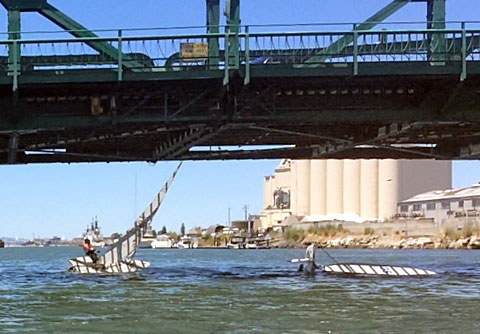
“Yes, this race usually involves capsizing and swimming,” said Marc Sloane, who finished first in the race despite some time in the water. “It’s all about the currents.” After more than an hour of intense match racing up the Estuary against Sloane, Herbst finished second, followed closely behind by Mike Bishop.
Video by Elisa Williams
This year’s Chichester race was hosted by Alameda Community Sailing Center and began and finished at Seaplane Lagoon in the old Alameda Naval Air Station. This is only the second sailing race ACSC founder Kame Richards knows of having been held at Seaplane Lagoon (the first was a Bart’s Bash regatta hosted by America’s Cup Team Artemis, whose base was nearby) and it showcased stunning backdrops on three sides: giant aircraft carriers to the south, aircraft hangers and a fanciful orange circus tent and the Oakland hills to the north and a crystal-clear view of the San Francisco skyline to the west.
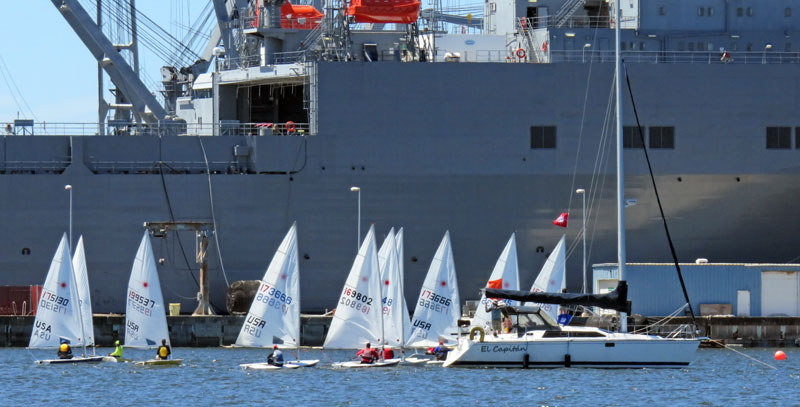
The day began with an exhibition buoy race, where Sloane also finished first, Bishop came second and Herbst came third. As the sailors were putting their boats away in the parking lot, laughing about their mishaps (Josh Lindsay got his mast caught briefly in the bridge and moments later found a manta ray swimming under him) and congratulating Herbst on his bridge-ducking finesse, Chris Gabbe said, “Can we stop for a minute and talk about that exhibition race? How perfect were those conditions? Flat seas and good wind? How often do you see that?” The consensus among the Laser fleet was that they’re looking forward to more racing at Seaplane Lagoon. Even if it doesn’t involve swimming.
